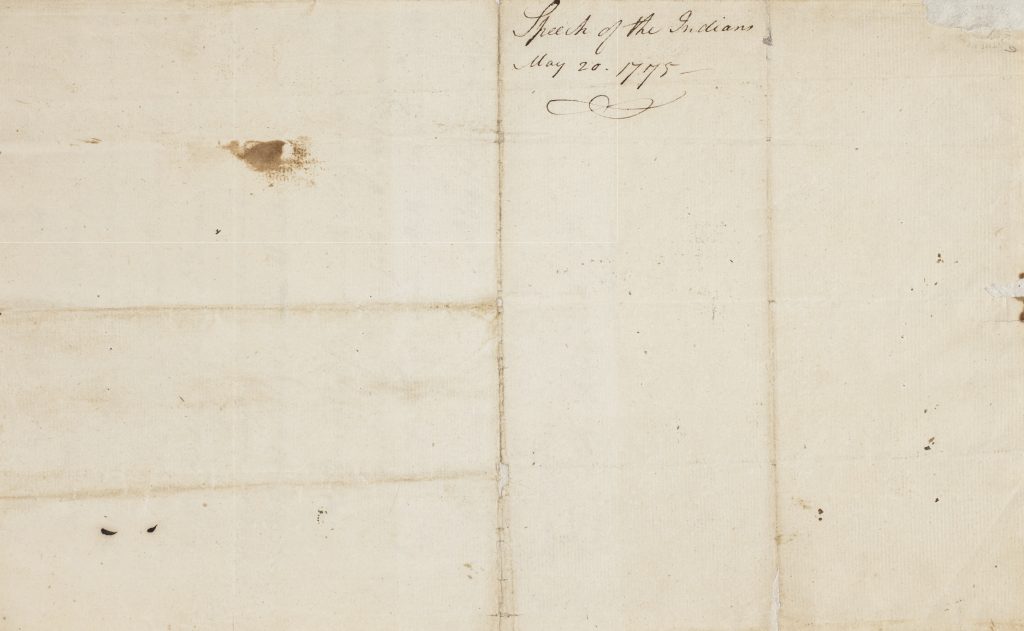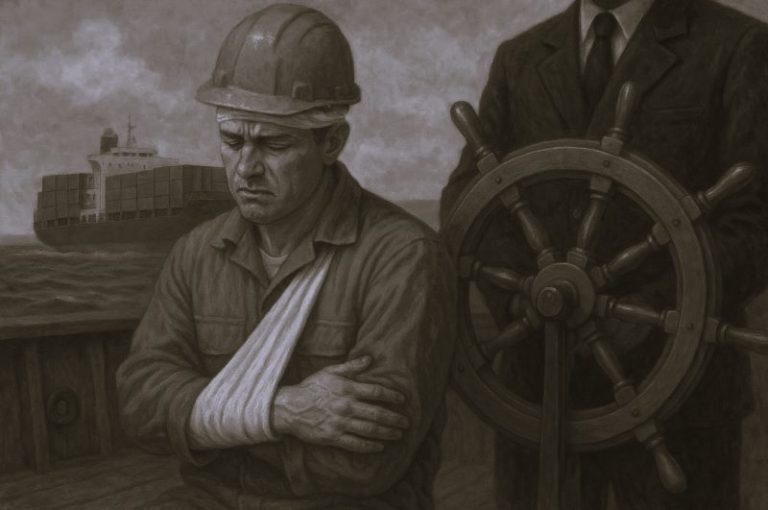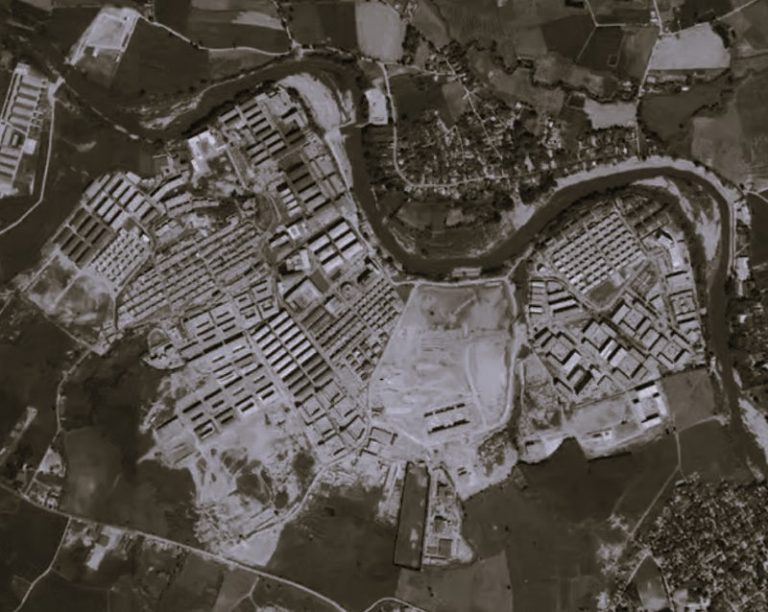
Who identified as “American” during the Revolution? To what extent did the American Revolution serve the interests of all inhabitants of the emerging nation?
Originally published by Newberry Digital Collections for the Classroom, 09.05.2017, Newberry Library, republished with permission for educational, non-commercial purposes.
Introduction
When we think of the Americans during the Revolutionary War, we think George Washington, John Adams, Paul Revere—the Patriots. The American Revolution as told in school textbooks follows this pattern of telling the war according to how Patriots viewed it. The evil British King George III and the British Government infringed on the rights of the colonists, the colonists justifiably rebelled against British rule and, after almost a decade of war (in which the colonists were horribly outnumbered, with little experience, training, and equipment), the brave but rag-tag Continental Army defeated the best army in the world. Of course, this first American Army overcame great obstacles due to the intelligence, bravery, and almost God-like qualities of their leader, General George Washington.
This is the story of the war that we learn growing up and few of us question it. However, the American Revolution was a much more complex conflict and, in order to develop a more accurate and well-rounded understanding of it, we must look at the different peoples who experienced the war and were affected by it. People living in the rebellious colonies included not only the Patriots, but also Loyalists, American Indians, slaves, and others who may have had good reason to oppose independence or who would not be counted as citizens of the newly formed republic. Even active participants and contributors to the war were a diverse lot: the British army hired Hessian soldiers to join the fighting against the Patriots and the French helped the Americans financially and militarily. Looking at these perspectives gives us a larger context from which we can study the war, and determine the outcomes for all Americans.
The following collection of documents serves to illustrate these various perspectives on the causes and effects of the American Revolution. The goal of this collection is to give a small sampling of the wealth of information that is available on the many different stories of the American Revolution, not just the Patriot story familiar to us. While the patriot view is represented, it is these other perspectives that serve to guide us to a better understanding of the various interests different groups of people had in the war, and the war’s affect not only on the newly independent United States of America, but on people around the world.
The Patriots

Though the most well-known perspective of the American Revolution, at least for Americans, it is important to understand the Patriot view of the Revolution in order to provide context for the other perspectives of peoples living in America and those other groups involved with the war. The causes of the American Revolution (according to the Patriots), were long in coming, starting with the French and Indian War, and including the acts passed by Parliament on the colonies to raise money to help pay for that war (including the Stamp Act, and the ‘Intolerable Acts’). As subjects of the British crown and taxpayers, the colonists believed they had a right to representation in Parliament. Boston was hit the hardest by these taxes and therefore minor revolts broke out there, which led to further British involvement, including more military personnel and harsher laws, which led to further revolt and ultimately the discussion among the colonies to create a unifying force (the Continental Congress) to try to get Parliament to ease the pressure off of the colonies.

We know what happens next. The colonists start to prepare for battle, calling out the militia and stockpiling weapons, the British attempt to seize these stores of weapons, and the battles of Lexington and Concord ensue. Both sides refused to yield and the war escalated from there. The war finally ended with the Treaty of Paris in 1783 and America finally became an independent country.

These documents span from before the war until almost the end of the war and they represent some of the ideals for which the Patriots stood. As you read these documents think about how the American Revolution might have served the interests of this group.
The Loyalists

The Loyalists are another group of Americans whose perspective must be considered for a better understanding of the American Revolution. While most revolutionaries came from the middle class, most Loyalists were the very rich (who had prospered under British rule) and the very poor, who had no interest in the ideals of liberty when they were just struggling to survive. The British Army believed that between two-thirds and three-fourths of the American population was loyal to the crown. Their military strategy was intended to empower this presumed majority and to take control of American affairs away from the Revolutionaries.

Many Loyalists however, had a very difficult time throughout the Revolution. The Patriots confiscated Loyalist property and even threatened many Loyalists themselves. This caused many Loyalists to flee the colonies and return to the safety of Britain (as is the case with Ms. Wells in the document below). Other Loyalists remained and attempted to help the British by acting as spies and guides for the British army. Others gave their own property for the use of the British army and still others welcomed British soldiers into their homes. Naturally, many Loyalists looked to the British army for protection and often fled their homes and traveled to British-held cities where they would be safe. However, the British army often mistreated Loyalists as well, taking their property without paying, and the British-held cities became so cramped because of the large number of Loyalist refugees that the army could not house and feed them all and dangers of disease and fire spread.
The American Indians

Summarizing the American Indian perspective is difficult, more so than the other groups represented in this collection, because it is not just one group, but rather many various tribes, each with its own languages, customs, and loyalties. American Indians fought on both sides of the Revolution, as they had in the French and Indian War (1754–1763). Initially, most tribes wanted to remain neutral and treaties were drawn up between the Revolutionaries and various tribes to that effect. Based on the evidence, American Indians wanted to be left alone.


As the Revolution continued, however, Indians could not maintain neutrality and eventually joined in the fight. The Oneida Peoples, a collection of six different tribes in New England (including the Mohawk) initially maintained neutrality but eventually joined the British. On the other hand, the Micmac, in eastern Canada, fought for the Revolutionaries. Ultimately, Indian tribes fought for the side they believed would be the best for their own interests and would allow them to continue in peace on their own lands. As a response to American Indians allying with the British, part of the Declaration of Independence accuses the British crown of “…excit[ing] domestic insurrections amongst us, and has endeavoured to bring on the inhabitants of our frontiers, the merciless Indian Savages, whose known rule of warfare, is an undistinguished destruction of all ages, sexes and conditions.” At the conclusion of the war, the tribes that had fought for the British had to find a way to negotiate peace with the Americans.
The Slaves and Free Blacks


Slaves and free blacks in the colonies fought on both sides of the Revolution. For slaves, fighting meant the potential of freedom. Many slaves took the place of their masters in the Continental army with the agreement that they would be freed upon their return. Other slaves ran away and joined the British army, which offered emancipation to any slave that fought on their side. Other slaves accompanied their masters in the army and performed the function of servant, cooking and cleaning at camp. Even General George Washington had a slave with him during the war, William Lee, who acted as servant, military aid, and companion. The following sources come from a book of stories about individuals that served in the Continental army and then later attempted to draw a pension for their service from Congress.
The British
The British were in a tight spot regarding their American colonies. On the one hand, most British felt that, as the mother country, Britain had the right to impose any laws or rules it wanted on its colonies. On the other hand, a war in and with the colonies would potentially damage the economic and commercial prosperity that the British relied upon. The refusal of the Continental Congress to comply with Britain’s requests resulted in Britain taking ever more militant steps, leading to the skirmishes at Lexington and Concord in April of 1775, and the colonies’ declaring independence in July 1776. The British also had to consider the French interests in this affair, as the French still felt humiliated after their defeat in the French and Indian War and were looking for revenge at the best moment.

The British army during the American Revolution was composed of British regulars and Hessian soldiers. The British had one of the greatest armies in the world at that time and its regulars were well trained and disciplined. The Hessian mercenaries were German soldiers hired by Britain and were a highly disciplined and well-trained group. In addition to a professional and well-trained army, the British also had the most-powerful navy in the world.

Looking at the Revolution from the British perspective can help students of the war gain a better understanding of the (mainly economic) reasons why the British fought to keep the colonies, the relationship between the colonists and its enemies, and also the often-overlooked relationship between Britain and France, and how that tense relationship affected the American Revolution.
The French
While many believe that the French helped the American cause in the Revolution because of their shared love of liberty, the reasons why the French got involved in the war, and their interests in the war were much more complex. The French deliberated heavily before agreeing to first help finance the American effort and allow the use of their ports and then ultimately to help by providing ships, military supplies, and soldiers for the Americans.

The French had lost the Seven Years War (French and Indian War), and were still trying to recover from that defeat economically and politically. In addition, the idea of a rebellion in a country’s colony went against the monarchical idea of complete power over colonies, including the fear that such rebellious attitudes would spread to their own colonies in the Americas. In order to understand why the French willingly spent millions to help the Americans break away from the English, we must look back to the intense competition between the French and the English. Both countries took any opportunity to hurt the other. In fact, the French were close to getting Spain to join the war effort as well, though ultimately Spain remained neutral.

Based on the European perspective, students of the American Revolution start to get a sense of the worldwide implications of the Revolution, and the importance it had, not just whether the colonies would be independent or not, but how international diplomacy would be affected.
Selected Sources
- David Hackett Fischer. Washington’s Crossing. New York: Oxford University Press, 2004.
- Charlemagne Tower. La Fayette in the American Revolution with Some Account of the Attitude of France Toward the War of Independence. Vol. I. Philadelphia: J.B. Lippincott Co., 1895.
- The Declaration of Independence
By Carolyn Latshaw
National Society of Daughters of the American Revolution–Chicago Chapter







